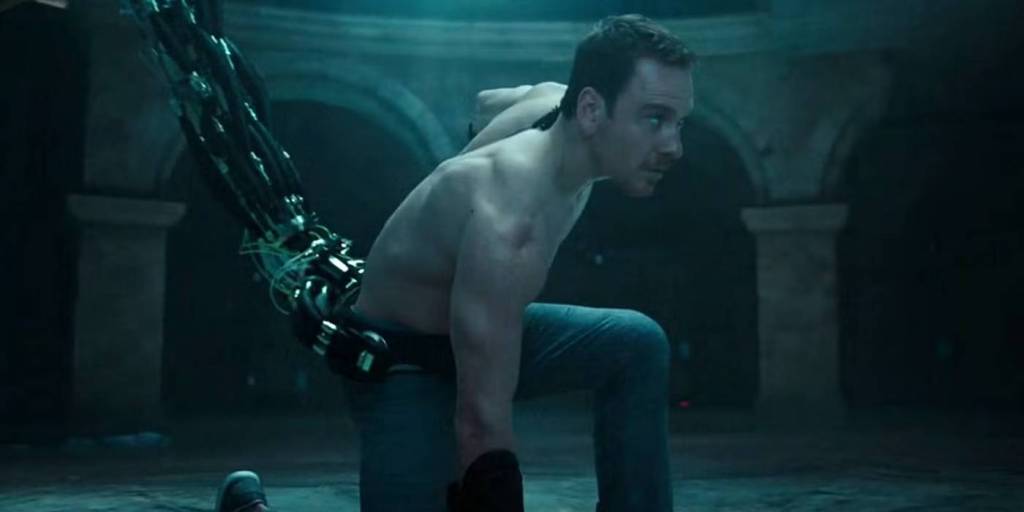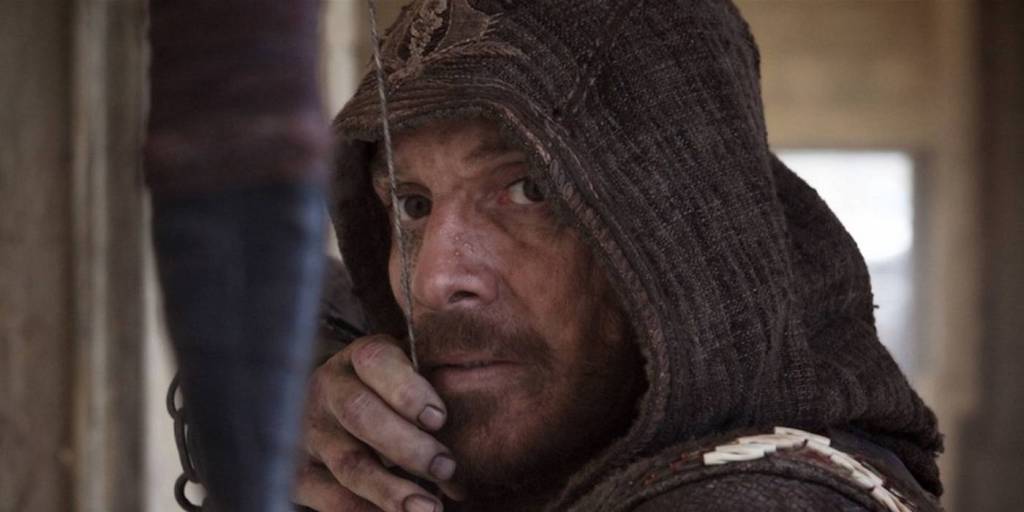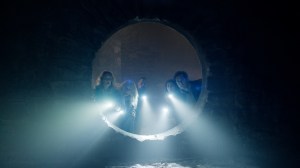Video game movies don’t have the most glowing of histories, but there have been some genuinely great ones, and there’s one in particular I find to be horrendously underrated. Video game movies first kicked off in earnest in the ’90s, but despite the popularity of such hits as 1995’s Mortal Kombat, it really hasn’t been until the modern day Sonic the Hedgehog movies that video game films have developed a relatively positive reputation. That development really should have begun much sooner, in my opinion, with the release of 2016’s Assassin’s Creed.
Videos by ComicBook.com
Based upon the popular video game franchise by Ubisoft, Assassin’s Creed sees death row inmate Cal Lynch (Michael Fassbender) kidnapped by the Abstergo organization (the modern incarnation of the Knights Templar) and used in a device called the Animus in order to relive the adventures of his ancestor Aguilar (also Fassbender) of the Order of Assassins in Spain during the Spanish Inquisition. With Cal as their recruit, Abstergo hopes to uncover an ancient artifact known as the Apple of Eden to gain control over the free will of mankind. Assassin’s Creed left little impact at the box office or among audiences and critics in its December 2016 release, and that’s a real tragedy. Assassin’s Creed isn’t just a phenomenal video game movie, but an enthralling historical adventure with awe-inspiring stunts and action sequences, and deserves far more love than its gotten.
Assassin’s Creed Captures The Essence Of The Games While Being Very Accessible To General Audiences

The basic premise of the Assassin’s Creed franchise is rooted in the concept of genetic memory, with characters in modern times using the Animus as a kind of time-traveling device to experience the lives and adventures of their ancestors in historical settings. The Assassin’s Creed games have deservedly acquired a reputation as some of the best adventure games of all time, taking gamers back in time to every historical setting conceivable, from the Italian Renaissance to Ancient Egypt to different periods in Chinese, French, and American history, and everything in between. All of the above is captured in a marvelous cinematic package in the Assassin’s Creed movie.
The concept of the Animus, the conflict of the Order of Assassins and the Knights Templar, and the idea of simultaneously taking place in two time periods centuries apart are all captured to perfection in Assassin’s Creed. While the movie flips the script to a principally modern-focused setting with Cal and Abstergo Industries as the main lens through which the story is told with the Spanish Inquisition setting being the secondary framework, that also makes Assassin’s Creed uniquely well-suited to cater to both fans of the games and newcomers. As someone largely unfamiliar with the Assassin’s Creed games upon seeing the film in 2016, the movie’s framing of how the Animus and its dual time-setting function works not only got me up to speed very quickly, but made me instantly eager to take the dive into the Assassin’s Creed universe on the gaming side. Now much more well-versed in the Assassin’s Creed games, the movie adaptation has a double-layered quality to me of being able to see how well it adapts its namesake to the big-screen while being able to fondly recall how easily it pulled a newcomer like me in. In turn, that also opens the door to another of Assassin’s Creed‘s greatest tricks.
RELATED: Assassin’s Creed Shadows to Bring Back Beloved Gameplay Feature From Assassin’s Creed 2
Assassin’s Creed Has Phenomenal Production Values & Action Sequences

With a budget of $125 million on its side, Assassin’s Creed puts every penny of its budget to splendid use on-screen. The Animus sequences splicing the medieval adventures of Aguilar and his allies into Cal’s modern mechanized re-living of them are an excellent blend of expansive sets, CGI, and practical effects. Additionally, the sequences set in medieval Spain are worthy of an historical epic. The sets, costumes, weaponry, and overall design of Spain during the Inquisition give a true feeling of being transported back in time and are never less than completely convincing as the genuine article. The makers of Assassin’s Creed clearly didn’t squander their plentiful resources on realizing the world of the games in live-action, and so too did they pay equal attention to the movie’s outstanding stunts, parkour chases, and martial arts fight sequences.
Even putting aside Assassin’s Creed‘s video game background, the movie is a parkour fan’s dream come true. I’d go as far as to say to that Assassin’s Creed is on the level of the District 13 movies in delivering some of the best parkour chases and stunts that any action movie has ever pulled off. Moreover, for not being based on a fighting game franchise per se, Assassin’s Creed also has some of most fluid, enthralling, and impactful martial arts fights of any video game movie, especially the movie’s climactic revolt of Assassins held captive in Abstergo Industries. The movie’s fight and parkour sequences are also augmented with plenty of Jackie Chan-worthy stunt work to enhance their impact. The game’s Leap of Faith was even realized not with CGI, but a real 125-foot drop performed stuntman Damien Walters, among the highest such practical jumps ever performed in film history. On every possible level, Assassin’s Creed strives to not just be a great video game movie, but one that Tony Jaa would be in awe of. In the opinion of this devoted Tony Jaa and Jackie Chan fanboy, Assassin’s Creed decisively succeeds in that endeavor.
Why Assassin’s Creed Deserves Your Attention

Assassin’s Creed sadly came and went quietly in the 2016 holiday season, the close proximity of Rogue One: A Star Wars Story surely doing it no favors at the box office and its tepid reviews likewise not serving to inspire much general audience or gamer interest. With that said, Assassin’s Creed certainly captured my attention even more so than Rogue One did at the time, as I saw the former three times theatrically compared to the latter’s two. No aspersions to Rogue One, of course, but when a video game movie that a newbie like me has only a passing familiarity with pulls me into the theater more than the Star Wars movie with Donnie Yen, it’s clearly doing something right. In the case of Assassin’s Creed, however, that something is actually quite a lot.
As an encapsulation of the video games that inspired it, Assassin’s Creed gives gamers the essence of its source material while acting as a prestigiously well-packaged introduction to the franchise for those who have never played an Assassin’s Creed game. Evidently, Ubisoft themselves agreed, with the Assassin’s Creed movie not only being directly in canon with the games (via the inclusion of numerous characters connected to characters from the games, such as Lin being a descendent of Shao Jun), but with Assassin’s Creed: Origins later establishing a connection between its heroine Layla Hassan and Marion Cotillard’s Sofia from the movie. In a real way, Ubisoft has made the Assassin’s Creed movie very much about its franchise’s core canon, its box office failure and lukewarm reviews be damned, which says quite a lot long term legacy.
With the added value of the movie’s outstanding action sequences and stunts, Assassin’s Creed works on the dual levels of both popcorn movie and video game movie with equal power. I can still remember my curious but relatively low expectations for Assassin’s Creed when I walked into the theater during the 2016 holiday season, and the thrill of being so shockingly surprised. Like its titular warriors, Assassin’s Creed may remain hidden in the shadows after its box office demise and unremarkable reviews, but it deserves to be brought back into the light. I’ve never seen a more underrated video game movie than Assassin’s Creed, and hopefully, it’ll one day get the recognition it deserves.








